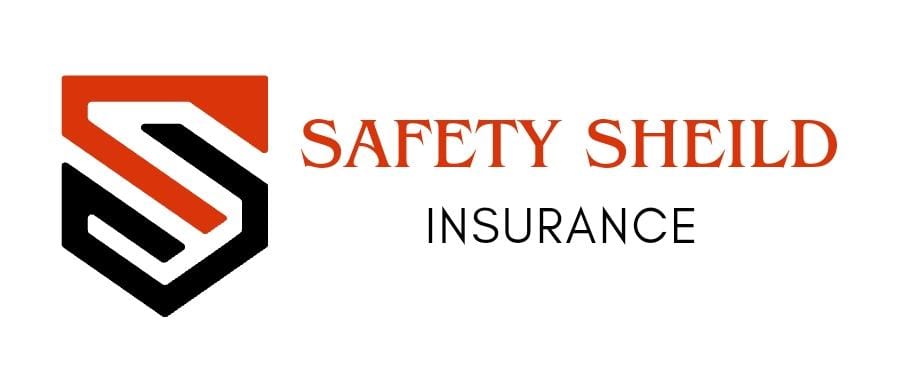Life Insurance
In the USA, insurance plays a crucial role in protecting individuals, businesses, and assets against financial losses. Here are some key types of insurance commonly used in the USA:
Health Insurance: Covers medical expenses for illness or injury. It can be obtained through employers, government programs like Medicare and Medicaid, or purchased privately.
Auto Insurance: Required by law in most states, it covers damage and liability in case of accidents involving vehicles.
Homeowners/Renters Insurance: Protects against damage to homes or belongings due to incidents like fire, theft, or natural disasters.
Life Insurance: Provides financial support to beneficiaries in case of the insured person’s death, ensuring dependents are taken care of.
Business Insurance: Covers various risks specific to businesses, including liability, property damage, and business interruption.
Liability Insurance: Covers legal costs and damages in case of lawsuits against individuals or businesses for negligence or harm caused to others.
Disability Insurance: Provides income replacement if the insured person becomes unable to work due to disability.
Insurance in the USA is regulated at the state level, with each state setting its own regulations and requirements. It’s important for individuals and businesses to understand their specific insurance needs and shop around to find policies that offer adequate coverage at competitive rates.
Life insurance is a type of insurance that provides a financial benefit to designated beneficiaries upon the death of the insured person. Here are some key points about life insurance:
Purpose: The primary purpose of life insurance is to provide financial protection to dependents or beneficiaries after the insured person passes away. It ensures that loved ones are financially supported and can maintain their quality of life despite the loss of income.
Types:
Term Life Insurance: Provides coverage for a specific period (e.g., 10, 20, or 30 years). If the insured person dies during the term, the beneficiaries receive the death benefit. Term life insurance generally offers lower premiums compared to permanent life insurance.
Permanent Life Insurance: Provides coverage for the entire life of the insured person, as long as premiums are paid. It includes several types such as:
- Whole Life Insurance: Offers a guaranteed death benefit and accumulates cash value over time that can be borrowed against or withdrawn.
- Universal Life Insurance: Provides flexibility in premium payments and death benefits, allowing adjustments based on financial needs.
- Variable Life Insurance: Allows the policyholder to allocate premiums among various investment options, potentially increasing cash value and death benefits.
Benefits:
- Death Benefit: The amount paid to beneficiaries upon the insured person’s death.
- Cash Value: Accumulates in permanent life insurance policies, providing a savings component that can be used during the insured person’s lifetime.
- Tax Advantages: Death benefits are generally income tax-free to beneficiaries, and the cash value growth may have tax-deferred treatment.
Considerations:
- Coverage Amount: Determined based on financial obligations, such as mortgage payments, education expenses, and living costs.
- Premiums: Vary based on age, health, coverage amount, and type of policy.
- Policy Riders: Optional features that can be added to customize coverage, such as accelerated death benefits or disability waivers.
Importance: Life insurance is crucial for individuals with dependents who rely on their income, such as spouses, children, or aging parents. It provides peace of mind knowing loved ones will be financially supported in the event of premature death.
When choosing life insurance, it’s essential to assess personal financial goals, family needs, and budget constraints to select a policy that best meets long-term objectives. Consulting with a financial advisor or insurance agent can help navigate the options and find the most suitable coverage
Final expenses insurance, also known as burial insurance or funeral insurance, is a specific type of life insurance designed to cover the costs associated with a person’s funeral, burial, and related expenses upon their death. Here are some key aspects of final expenses insurance:
Purpose: The primary purpose of final expenses insurance is to alleviate the financial burden on loved ones during a difficult time by covering the costs associated with end-of-life arrangements.
Coverage Amount: Typically, final expenses insurance provides a death benefit ranging from a few thousand dollars to around $25,000, depending on the policy. This amount is intended to cover funeral expenses, burial or cremation costs, casket or urn expenses, memorial service costs, and other related expenses.
Simplified Underwriting: Many final expenses insurance policies offer simplified underwriting compared to traditional life insurance policies. This means the application process may involve fewer medical questions or medical exams, making it easier for older individuals or those with health issues to obtain coverage.
Premiums: Premiums for final expenses insurance are often fixed and do not increase over time. This makes it easier for policyholders to budget and plan for the future.
Policy Features:
- Guaranteed Issue Policies: These policies are available without requiring a medical exam or health questionnaire. As long as you meet the age requirements (typically between 50-85 years old), you can purchase coverage.
- Graded Benefit Policies: These policies have a waiting period (often 2-3 years) before the full death benefit is paid out. If the insured person passes away during the waiting period, the beneficiary may receive a reduced benefit or a refund of premiums paid.
Flexibility: Final expenses insurance can be purchased as a standalone policy or as a rider to an existing life insurance policy. It provides flexibility in tailoring coverage to specific end-of-life needs.
Tax Implications: Generally, death benefits from final expenses insurance are not subject to federal income tax. However, it’s advisable to consult with a tax advisor for specific guidance based on individual circumstances.
Final expenses insurance is particularly beneficial for individuals who want to ensure their loved ones are not burdened with the cost of funeral and burial expenses. It provides peace of mind knowing that financial preparations have been made for end-of-life arrangements.
Term insurance is a type of life insurance that provides coverage for a specific period, or term, of time. Here are the key features and aspects of term insurance:
Coverage Period: Term insurance policies offer coverage for a predetermined period, such as 10, 20, or 30 years. If the insured person dies during the term of the policy, the beneficiaries receive the death benefit. However, if the insured person survives the term, the coverage ends, and there is no payout.
Death Benefit: The death benefit is the amount paid to the beneficiaries if the insured person passes away during the term of the policy. This benefit is generally income tax-free to the beneficiaries.
Premiums: Term insurance typically has lower premiums compared to permanent life insurance policies, especially in the early years of the policy. Premiums are usually level and fixed for the duration of the term, although they can increase if the policy is renewed or converted to a different type of policy.
Renewability and Convertibility: Many term insurance policies offer the option to renew the policy at the end of the term, often at a higher premium rate based on the insured’s current age and health status. Some policies also include a convertibility feature, allowing the insured to convert the term policy into a permanent life insurance policy without additional medical underwriting.
No Cash Value: Unlike permanent life insurance policies (such as whole life or universal life), term insurance policies do not accumulate cash value over time. This means there is no savings component or investment feature associated with term insurance.
Suitability: Term insurance is typically chosen by individuals who have a specific financial obligation or need for coverage during a particular period. Common reasons for purchasing term insurance include income replacement for dependents, paying off a mortgage, funding children’s education, or covering outstanding loans.
Types of Term Insurance:
- Level Term: Provides a fixed death benefit and premiums throughout the term of the policy.
- Decreasing Term: The death benefit decreases over time, often used to cover specific liabilities that decrease over time, like a mortgage.
- Renewable Term: Allows the insured to renew the policy at the end of the term without undergoing medical underwriting.
- Convertible Term: Permits conversion to a permanent life insurance policy without needing to provide evidence of insurability.
Term insurance provides straightforward protection for a defined period at an affordable cost, making it a popular choice for individuals who prioritize coverage during their working years when financial obligations are typically higher.

